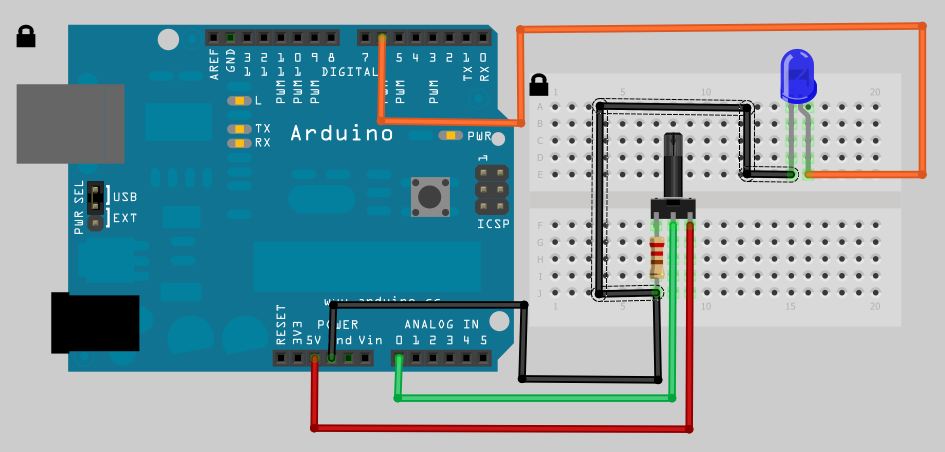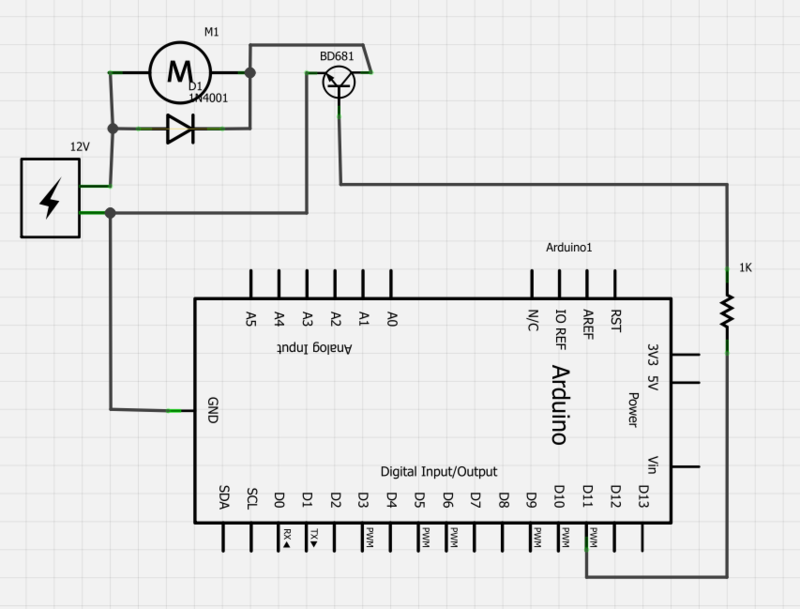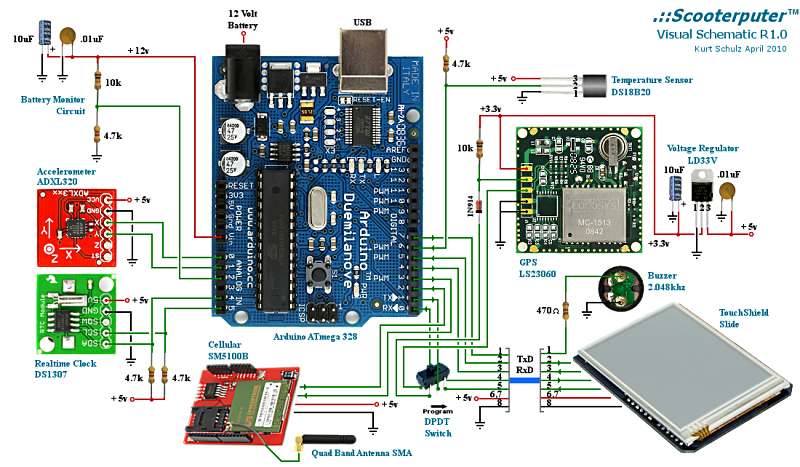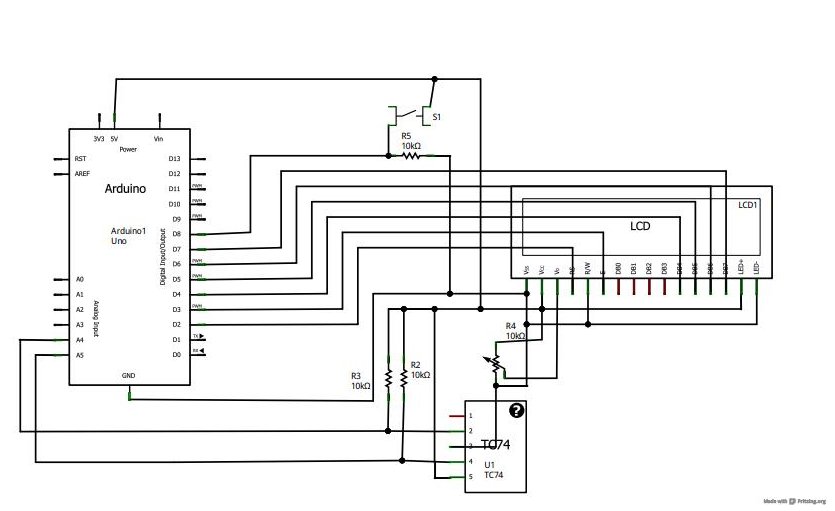
learning Arduino programming
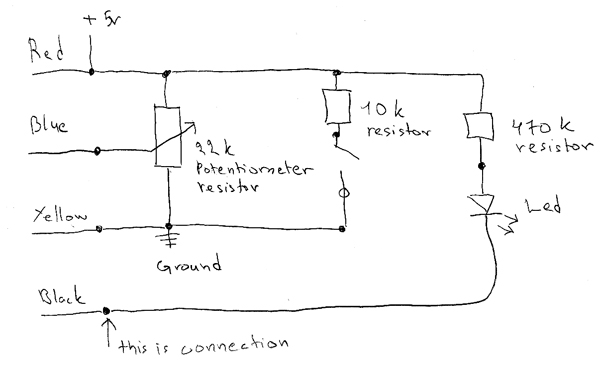
The circuit consists of a 10 kΩ resistor, a 470 kΩ resistor, a potentiometer, and an LED. This circuit is intended for learning Arduino programming in class.
The circuit utilizes a combination of resistors and an LED to create a basic electronic setup suitable for educational purposes. The 10 kΩ resistor is typically employed to limit current flow to the LED, preventing it from burning out. The 470 kΩ resistor may be utilized in conjunction with the potentiometer to form a voltage divider, allowing for adjustable voltage levels that can be read by an Arduino analog input. The potentiometer enables students to experiment with varying resistance values, thereby understanding how changes in resistance affect current and voltage in a circuit.
The LED serves as a visual indicator, providing immediate feedback when the circuit is powered. When connected to an Arduino, students can program the microcontroller to turn the LED on and off, or even to vary its brightness based on the resistance set by the potentiometer. This hands-on experience is crucial for grasping fundamental concepts in electronics and programming, as it combines theoretical knowledge with practical application.
Overall, this circuit serves as an excellent introductory project for students to learn about the interaction between hardware components and software programming in Arduino, fostering a deeper understanding of both electronics and coding principles.The circuit consist of 10 k and 470 k resistors. Also one potentiometer resistor and led was used. This circuit is used for learning Arduino programming later in class.
The circuit utilizes a combination of resistors and an LED to create a basic electronic setup suitable for educational purposes. The 10 kΩ resistor is typically employed to limit current flow to the LED, preventing it from burning out. The 470 kΩ resistor may be utilized in conjunction with the potentiometer to form a voltage divider, allowing for adjustable voltage levels that can be read by an Arduino analog input. The potentiometer enables students to experiment with varying resistance values, thereby understanding how changes in resistance affect current and voltage in a circuit.
The LED serves as a visual indicator, providing immediate feedback when the circuit is powered. When connected to an Arduino, students can program the microcontroller to turn the LED on and off, or even to vary its brightness based on the resistance set by the potentiometer. This hands-on experience is crucial for grasping fundamental concepts in electronics and programming, as it combines theoretical knowledge with practical application.
Overall, this circuit serves as an excellent introductory project for students to learn about the interaction between hardware components and software programming in Arduino, fostering a deeper understanding of both electronics and coding principles.The circuit consist of 10 k and 470 k resistors. Also one potentiometer resistor and led was used. This circuit is used for learning Arduino programming later in class.
In 19 March we had electronic class. All the students made simple electric circuit. The schematic of the circuit picture is above.
🔗 External reference